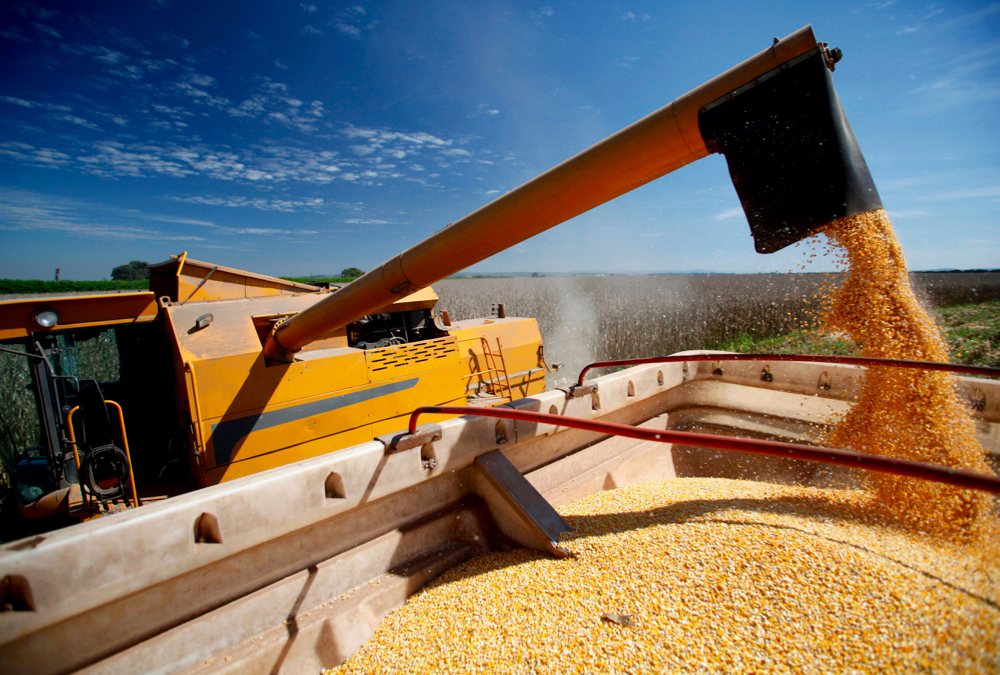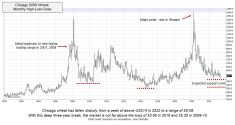According to Statistics Canada, total Canadian corn stocks as of Dec. 31 were 11 million tonnes, up from 10.7 million tonnes on Dec. 31, 2019.
Total soybean stocks at the end of 2020 were estimated at 3.7 million tonnes, down from four million tonnes at year-end of 2019.
Quick look
Read Also

Scouting advised for soybean aphids
Soybean aphids have been spotted in a few fields in southern Ontario that haven’t seen soybean aphids in quite a…
Soybeans: Ontario soybean basis holding with farmer selling.
Corn: Greater Ontario corn production offset by much larger exports.
Wheat: Export demand has been main driver of Ontario prices.
Supply and disposition reports are important because they confirm Statistics Canada’s production survey and provide an idea of feed usage for crops like corn. It appears that corn usage is similar to last year. Corn and soybean estimates came in within trade expectations so traders are comfortable with Statistics Canada’s final production estimates.
Domestic and export demand for United States corn and soybeans is stronger than earlier anticipated. The tighter fundamentals have the corn and soybean markets functioning to ration demand through higher prices. At the same time, the markets are encouraging acreage.
Argentina and Brazil have received favourable rains during the past couple weeks. Argentine corn and soybean crops have experienced yield drag due to adverse conditions earlier in the growing season. The Brazilian soybean harvest is in the early stages but rains have delayed progress. This will cause Brazil’s second safrinha corn to be planted later than normal. This could result in lower yields. Chinese demand remains strong for all grains and oilseeds as the country continues to contend with a food shortage.
The Canadian dollar continues to trade in a range with support at 77.5 U.S. cents and resistance at 79.5 U.S. cents. On a macro scale, all major currencies appeared to strengthen against the U.S. greenback during the COVID recovery period. This trend appears to be reversing now that the height of the COVID pandemic is behind us and the vaccine rollout is gaining momentum in the U.S.
It appears the U.S. bond market is factoring in higher interest rates longer term and an inflation risk premium. The inflation risk premium is somewhat bullish for commodities.
Soybeans
We continue to project a historically tight Canadian soybean carryout at the end of the 2020-21 crop year. Before Dec. 31, 2020, Ontario soybean prices reached a high of just over $15 per bushel; however, we now find elevator soybean bids readily available above $17 per bu. This additional strength in the market has drawn stocks from producers but we don’t see significant slippage in domestic basis levels.
It appears that domestic crushers are reflecting a premium over export values in an effort to secure supplies.
Once Great Lakes shipping opens, we may see this change and elevator bids for export movement may be premium to domestic market. This market structure will depend on the crush schedule in the latter half of the crop year.
For the week ending Jan. 31, Canadian soybean crop year-to-date exports were just under 3.3 million tonnes, up nearly one million tonnes from last year. At the same time, crop year-to-date domestic use was 883,000 tonnes, up marginally from year-ago levels of 806,000 tonnes.
In the previous issue, we mentioned the world soybean market was in a transition stage. Brazil was in the process of replacing the U.S. as the dominant exporter. This transition stage has been delayed. Extensive rains in Mato Grosso and Parana provinces have slowed soybean harvest progress. As of Feb. 6, Brazil’s soybean harvest progress was only two to three per cent complete, compared to 15 per cent last year.
The vessel lineup in the ports of Santos and Paranagua has also been building with rains tempering vessel loading. This situation in Brazil has given the North American market a last shot of adrenalin.
The Argentine soybean crop was rated 18 per cent good to excellent during the first week of February, down from 66 per cent last year. We’re looking for the crop to finish around 44 million tonnes, down from 49 million tonnes last year.
Brazil is a different story because production is expected to finish near 133 million tonnes, which is a record and up from 126 million tonnes last year.
U.S. ending stocks will be historically tight; there is no doubt about it. U.S. beans out of the Gulf of Mexico are a sharp premium to Brazil for April and May.
What to do: We’ve advised Ontario farmers to be 100 per cent sold on their 2020 production and 20 per cent sold on their expected new crop. We feel all the bullish news has been factored into the futures market. Moving forward, we’ll see the Brazilian harvest progress accelerate. We don’t expect further downward revisions in the Argentine crop from current levels because of the favourable forecast.
North American farmers will increase soybean acres this spring.
Corn
The Ontario corn market is garnering strength from the tighter world fundamentals as the domestic situation isn’t overly bullish. Ontario corn production was estimated at 8.9 million tonnes, up from the 2019 output of 8.6 million tonnes. Statistics Canada estimated total Canadian feed use from Sept. 1 through Dec. 31 at 3.4 million tonnes, which was basically the same as year-ago levels.
The Canadian Grain Commission reported crop year-to-date exports for the week ending Jan. 31 were 489,300 tonnes, up from 12,500 tonnes last year. Feed demand is the same and the increase in exports is offsetting the gains in production.
The Ontario corn fundamentals are not considered tight compared to beans. Farmers need to keep this in perspective because it could cause the basis to weaken in the latter half of the crop year.
Export demand for U.S. corn continues to exceed expectations largely due to Chinese interest. At the same time, domestic feed demand is slightly higher than earlier anticipated as well.
Therefore, traders are now looking for the U.S. corn carryout to finish in the range of 27.5 to 30 million tonnes. This is down from the 2019-20 ending stocks of 48.7 million tonnes and sharply below the five-year average of 51.7 million tonnes.
The Argentine corn harvest will move into full swing in March and finishes up in April. Despite the upcoming harvest season, Argentine corn is only offered at a slight discount to U.S. origin for March and April. We’re not seeing a major switch to Argentine origin at this time.
The main corn production in Brazil comes from the second, or safrinha crop. This crop is going to be planted two to three weeks later than normal, which will cause pollination and late development to occur during June and July. This is when Brazil experiences extreme heat and limited rainfall. One can easily make the case that corn prices have limited downside until second-crop stocks are in export position.
What to do: In the previous issue, we advised producers to increase sales by 20 per cent bringing total sales to 80 per cent. We’re going to be patient with the final 20 per cent increment. The tight U.S. stocks situation and late development Brazilian corn may spur on more demand from Canadian origin during April and May and give the market another boost.
Wheat
Ontario elevator bid prices for soft red winter wheat are up 25 to 30 cents per bu. from late January. Offshore export demand has been the main driver off Ontario wheat prices.
Ontario soft red winter wheat exports to the U.S. have been lower than expected during the first half of the crop year. However, we’re projecting an increase in movement to U.S. end users from February through May.
The Ontario wheat crop was high quality so we’re not seeing significant volume of wheat move into feed channels as in past years. Farmers have been regular sellers throughout the crop year keeping commercial stocks at sufficient levels. Exporters and millers appear to be well covered for their nearby requirements.
The Russian wheat export tariffs of 50 euros per tonne will be implemented March 1. Ukraine export quotas will also be reached in March. We’ve seen a softer tone to the Black Sea market in the short term as farmers ramp up sales, however, these tariffs and export controls are bullish for the market after March 1.
European wheat values are underpinned by the strong corn and barley markets.
Export demand remains firm for North American spring wheat and U.S. hard red winter wheat. The U.S. Southern Plains and the Russian Southern District is on the drier side. Russian, European and U.S. seeded acreage is up from last year but there is still a fair amount of uncertainty with new crop production.
The wheat markets tend to incorporate a risk premium when the Northern Hemisphere crops come out of dormancy. We feel this risk premium has shown itself a month earlier than usual due to the spillover effect from corn.
What to do: This week, we’re advising producers to sell 20 per cent of their 2020 production bringing total sales to 80 per cent.
The market has factored in Russian tariffs, Ukraine export controls and current weather. Wheat has been underpinned by corn. To see further upside in wheat, we need to see additional strength in corn and a severe drought in Russia or the U.S. Winter precipitation has little effect on actual winter wheat yields. Seasonally, the U.S. Southern Plains and Russian winter wheat regions receive abundant moisture in
April.
We’re planning to make our final sale in late March once the forecast confirms these seasonal rains. In the short term, we feel producers need to sell into current strength.















